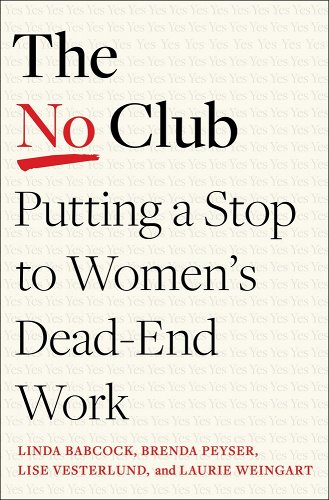The Three Pillars of Wellness: Physical, Mental, and Financial
The three pillars of wellness–physical, mental, and financial–are like three legs on a stool. Lose one, and the whole thing tips over. For example, if an employee needs an emergency medical procedure and has a high-deductible plan with little savings, not only will their physical health suffer, but they will soon feel mental and emotional stress as well. Ideally, employers will have plans in place to provide support in all areas.Rather than thinking in terms of siloes, the more effective approach for benefits leaders is to see how three pillars support an employee’s overall well-being. In a recent fireside chat at From Day One’s April virtual conference, Nate Nevas, head of benefits and health services at Pitney Bowes, provided an inside look at how to provide individualized care for a diverse workforce.The Current Moment in BenefitsThe current state of the workforce is both “the best of times, and the worst of times,” said Nevas. There are external forces making benefits challenging, including a nationwide lack of available primary care physicians and the rising costs of healthcare.But on the flip side, the current embrace of technology is having a positive impact on the HR world. “There are some things now that are available to provide as resources to our employees that are fantastic, that five, ten, 15 years ago just weren’t available,” Nevas said. This includes app-based resources like virtual healthcare appointments, online professional training courses, and even group fitness classes.Moderator Jeanhee Kim, an independent journalist, notes that the World Health Organization recently stated we are now going on year five of Covid. “Covid strained not just our physical health, but also strained our mental health and the economy,” Kim said. In order to embrace the current moment, employers need to be ready to address each of these concerns among their workforce.A Holistic Approach to Mental HealthNevas says that physical, mental, and financial wellness should all be approached with equal importance, and employers need to recognize how they are all interconnected. “We don't look at one as being more important than the other,” he said. “They’re all equally important to create someone who is going to come in and be fulfilled, be able to do their job, and feel good about themselves as an individual.”Journalist Jeanhee Kim interviewed Nate Nevas of Pitney Bowes at From Day One's April virtual conference (photo by From Day One)Prior to the pandemic, Nevas says, mental wellness tended to fall on the back burner. But throughout Covid, the need for mental health support became apparent, and his team began to put it on equal footing with physical and financial concerns. “We started a concerted effort to destigmatize mental wellness, using the phrase ‘it’s OK to not be OK,’” he said. Pitney Bowes began offering internal webinars “not just as a check-the-box effort, but as a consistent conversation and making it an acceptable conversation.”Since mental wellness statistics can be harder to track among employees than, say, 401(k) participation, leaders can gauge success by reviewing webinar statistics to see which topics are most important and touching base with senior leaders to see what employees are saying.Providing Individualized CareFor a global organization like Pitney Bowes, the workforce population is diverse, from high-powered salaried corporate executives to hourly workers for whom English might not be their first language. To keep things fair and consistent, Nevas says, Pitney Bowes doesn’t offer different benefits to different types of employees, but it may emphasize certain benefits to certain employees based on their interests and adjust how it communicates about them. For example, retirement planning options may be more attractive to employees who are salaried, even if the same benefits are offered to hourly workers too.Much of it comes down to knowing your audience and meeting them where they are. Hourly workers don’t have company email addresses or computers, he says. “We provide benefit guides that are in multiple languages. We know which languages are spoken the most at certain sites, and we’ll do hardcopy handouts there,” he said. He also knows there are huddle in-person meetings at the start of every shift, so he’ll give team leaders important messages to relay at those gatherings. Important messages will also appear on screens onsite, and each location has an employee experience champion available to explain benefits and encourage enrollment.Knowing that net cash flow is also important to the hourly population, Pitney Bowes provides advance pay options, low contribution health plans, and even major appliance purchase programs to help these employees make the most of their paychecks.Saving Money by Providing Better BenefitsPhysical, mental, and financial wellness benefits don’t have to break the bank for employers. Nevas says his organization has a benefits hub with discounts on car rentals, groceries, movie tickets, insurance, and more, plus a partnership to help with student loan refinancing. These benefits do not cost the organization any money, but can save the employee money and give them special access to certain perks.Pitney Bowes also emphasizes the importance and availability of free, preventative care so employees do not get hit as hard by future out-of-pocket costs. This is especially crucial among their immigrant employee population, which Nevas notes has more of a cultural resistance to medical check-ups.And of course, employee turnover can be a costly hit to an organization for a variety of reasons, so providing attractive benefits is also a boon to retention, particularly during this time of the great resignation. For Nevas and his team, this comes down to providing genuine, individualized care with an eye toward advancement and longevity. “Our employee value proposition is that ‘We do the right thing the right way,’” he said. They emphasize not only physical, mental, and financial wellness benefits, but also career development in terms of professional resources and a clear pathway to promotion. “We’re going to help you grow. Once we get someone in the door, it's about who we are as an organization, and what we're able to provide as a company from a cultural standpoint, not just benefits, but the whole picture and your professional development.”Katie Chambers is a freelance writer and award-winning communications executive with a lifelong commitment to supporting artists and advocating for inclusion. Her work has been seen in HuffPost and several printed essay collections, among others, and she has appeared on Cheddar News, iWomanTV, and CBS New York.






